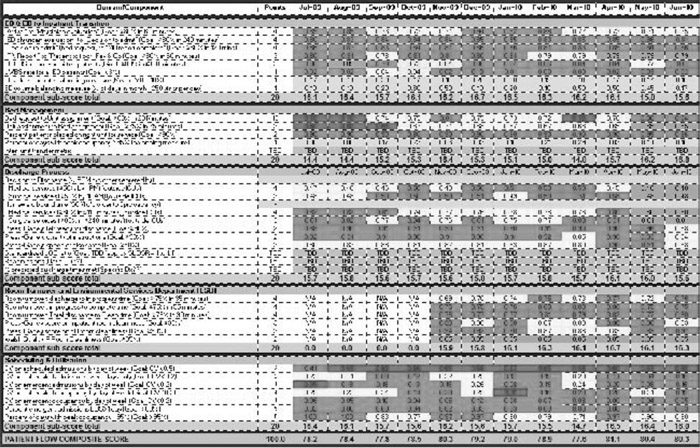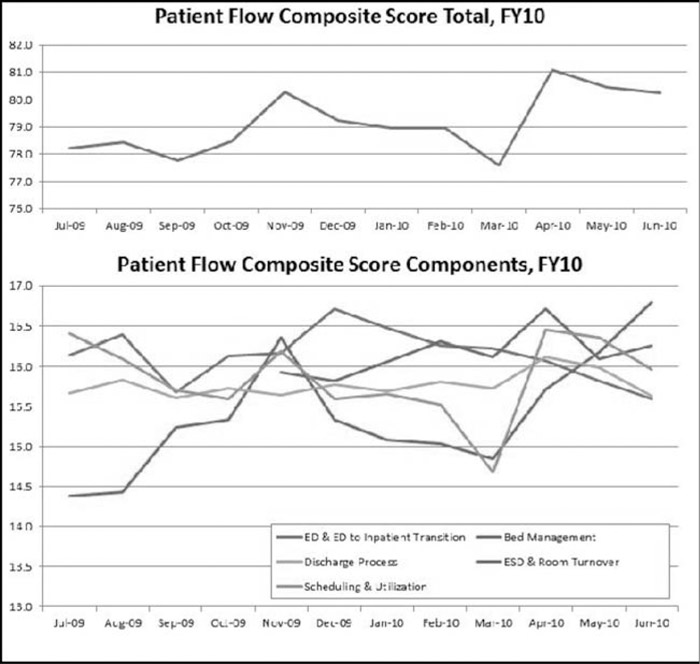Background:
Hospital patient flow and its measurement are a complex organizational issue. Composite measures may provide a holistic picture of patient flow for monitoring and improving.
Purpose:
To describe a patient flow composite score tool developed at a large, urban children's hospital. Five teams in the patient flow initiative proposed measures for their domains. Goals were based on historical performance. The 5 domains summed to 100 points; 80 was set as goal (green zone); yellow zone 70–79; red zone < 70. The composite score was used for 1 fiscal year and then modified in slight ways for the next fiscal year; goals were changed to encourage continuous improvement. Individual hospital units and divisions received specific reports on their performance monthly.
Description:
The composite score (Fig. 1) was well received by the patient flow improvement teams and administration. Areas needing improvement were called out by performance in the yellow or red zone; these areas became the focus for improvement work. Performance in particular measures tracked with hospital occupancy and turnover, as a well as events such as H1N1 pandemic (fall 2009) and start of new resident physicians (Fig. 2).
Conclusions:
A composite score can report overall performance while highlighting activities or areas in need of improvement. Composite scoring also allows for moving performance goals without changing the overall structure of measurement. Alternative single measures are less likely to engage the wide range of hospital staff involved in patient care and flow and be unable to detect specific performance areas that contribute to the flow.
Disclosures:
E. Fieldston ‐ none; L. Zaoutis ‐ none; B. Jayaraman ‐ none; K. Allebach ‐ none; M. Parra ‐ none; K. Gorman ‐ none


